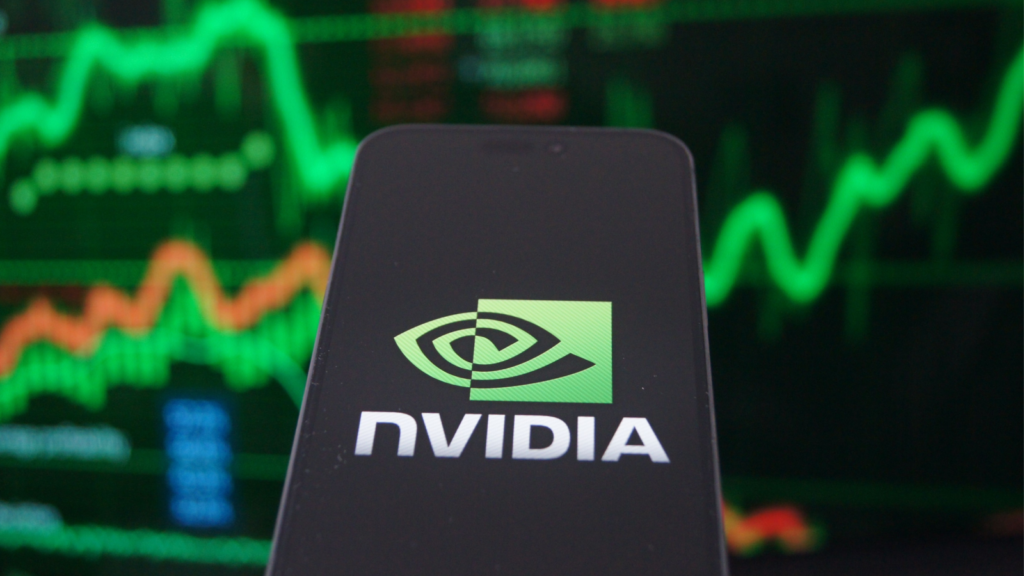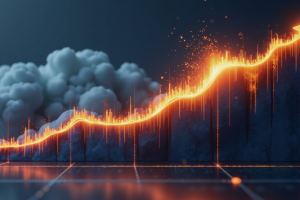
The stakes have never been higher for Nvidia (NASDAQ:NVDA) stock ahead of the company’s highly-anticipated second-quarter earnings call, due Wednesday. As much as investors have clamored for the tech giant this year, according to Michael Gayed, publisher of the Lead-Lag Report and portfolio manager at Tidal Financial, Nvidia’s bloated valuation represents a threat to the entire stock market.
Nvidia is one of Wall Street’s biggest winners in 2023. NVDA is up more than 200% this year as a clear frontrunner in the artificial intelligence (AI) race that’s taken equities by storm. The company has been toted as one of the strongest chipmakers around. Some even expect that its data center revenue surpassed the likes of Intel (NASDAQ:INTC) and Advanced Micro Devices (NASDAQ:AMD) for the first time ever in Q2.
At $432 a share, NVDA trades at 224 times its earnings, one of the highest price-to-earnings (P/E) ratios on Wall Street. This means the stock’s price is largely based on perceived future growth rather than its current revenue generation abilities. Nvidia is also the fourth most-weighted company on the Nasdaq 100, making up a staggering 4.3% of the entire index.
According to Gayed, Nvidia has been the subject of investor hysteria far beyond the likes of its suggested revenue generation capabilities:
“So this, to me, is just one of those classic dynamics that’s no different than the crypto media, it’s no different than the metaverse media. This is just another example of manic overconfident trading that becomes a self-fulfilling Ponzi type of dynamic, which is not anchored on fundamentals and which end up being a structural risk to the entire market because it encourages the exact leverage that creates the margin call.”
If NVDA Stock Fails, So Does Wall Street
While it’s common for growth stocks to rock sizable P/E ratios early in their lifecycle, and some of them certainly do fill into their valuations, something about Nvidia rings of another once-upon-a-time potential titan: Cisco (NASDAQ:CSCO). Cisco was one of the giants of the dot-com boom in the early 2000s. At $79 per share, the company traded as high as 38 times its revenue, representing a market capitalization of $546 billion, above even Microsoft (NASDAQ:MSFT) at the time.
Yet, even well into the internet age, Cisco has yet to recapture its early peaks. At the time of writing, Cisco is trading for $55 per share.
However, the danger of Nvidia isn’t that it won’t experience the staggering growth expected of it. It’s that investors realize en masse that the company isn’t what it’s cracked up to be.
“I said, Nvidia can take down the entire stock market… I’m very purposeful in that wording. It’s not like some hyperbolic statement because if I’m right about this disposition effect, and you look at the margin levels, where are people margined? In the magnificent seven.” Gayed continues. “So they start going down, Nvidia starts going down. Suddenly, now there are margin calls that then filter through to everything.”
The “disposition effect” Gayed refers to is a well-documented psychological principle that suggests that investors, in times of uncertainty, are more likely to dump their winners than their losers.
Indeed, out of a desire to close out of a position up or at breakeven, investors would rather hold onto a security until it clears its losses. As such, should there be a wide-spread margin call or unexpected volatility, NVDA stock and other members of the “magnificent seven” stand to lose more, faster, than other businesses.
Rising Rates Stand to Bury Equity Markets
Now, there’s an obvious question afoot here: What kind of market event could trigger such a brutal sell off? Well, the kind the market is currently facing.
According to Gayed, investors are experiencing a sort of cognitive dissonance, where they acknowledge the rapidly tightening financial system, driven by the Federal Reserve’s historic rate hike campaign, but continue to buy stocks as not to miss out on this year’s tech-fueled gold rush, encouraging others to do the same.
Rising interest rates are designed to slow down the economy by reducing free cash flow. The idea that companies up and down the Nasdaq 100, many of which are highly leveraged, will just continue to rake in record profits off the back of a weakening consumer base, given the Fed’s ongoing rate hikes, many of which haven’t even been fully digested by the economy, is a practice in delusion. And to be clear: the state of the U.S. consumer is deteriorating, regardless of last month’s spending report. Record-high credit card debt, the imminent return of student loan payments, and climbing delinquencies provide some clear evidence that things aren’t quite what they seem.
Apparently, this dissonance is starting to resolve itself in small caps.
“The reality is the higher rates are already starting to impact the economy. Right? I mean, you can see that in bankruptcy filings, which have been surging as of late, Chapter 11 filings. But it’s like ask yourself, everybody should be asking themselves, why is it that small caps have diverged so much from large caps? It’s more than just the AI side. The small cap side has diverged because of what we started the conversation with, the risk that these zombie companies rolling over their debt into higher rates won’t be able to survive when they roll over that debt…”
Is Black Monday Coming for NVDA Stock?
Gayed believes it’s only a matter of time before wider equity markets confront this rapidly tightening financial system. When that happens, this year’s bull market may give way to an unexpected crash. NVDA stock and friends stand to give back much of their timely gains.
“I don’t know if it’s next year. I think it’s probably here, but these divergences, when they resolve, they tend to resolve very violently. The broader market cannot be disconnected from the delayed effect of not just interest rates, but also of what’s happening on the ground as other companies start, now, filing for bankruptcy.”
This “violent resolution” may manifest in a form akin to another historic market downpour: Black Monday. According to Gayed, this year has given way to conditions that closely resemble the infamous 1987 stock market crash.
“So I ran that correlation and just for giggles on it, but you look at the correlation of the NASDAQ at this point in the year to the Dow, at this point in the year in 1987, correlation 0.86…I don’t think you’re going to have a Black Monday, right, but could you have a very sudden give-back of a substantial portion of the gains? Hell yeah, you can, because ’87 has proven it’s not impossible. We have an example of that. Now, I happen to think that there’s a scenario where it could be even worse than that, because I can go back to, if I’m right, that the bear market’s not over. Bear markets tend to end with a bang.”
On the date of publication, Shrey Dua did not hold (either directly or indirectly) any positions in the securities mentioned in this article. The opinions expressed in this article are those of the writer, subject to the InvestorPlace.com Publishing Guidelines.




